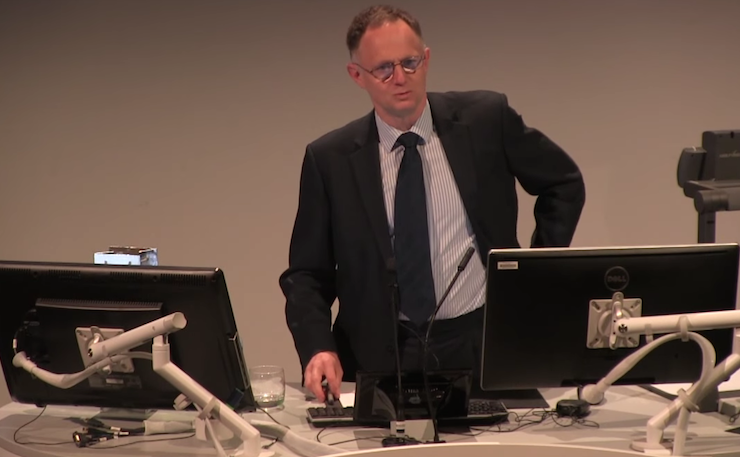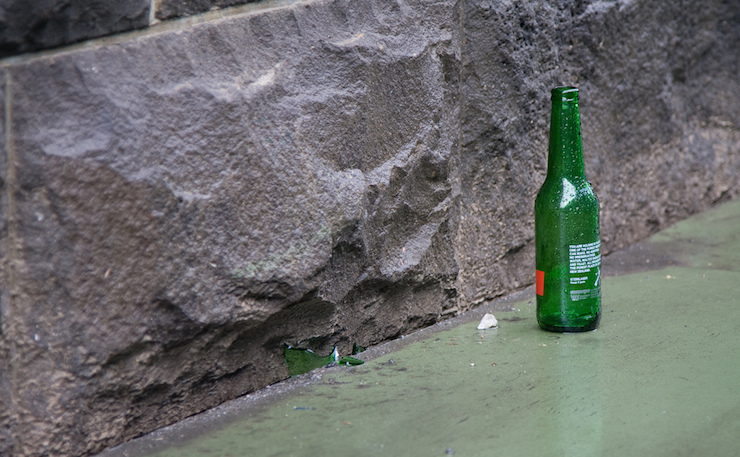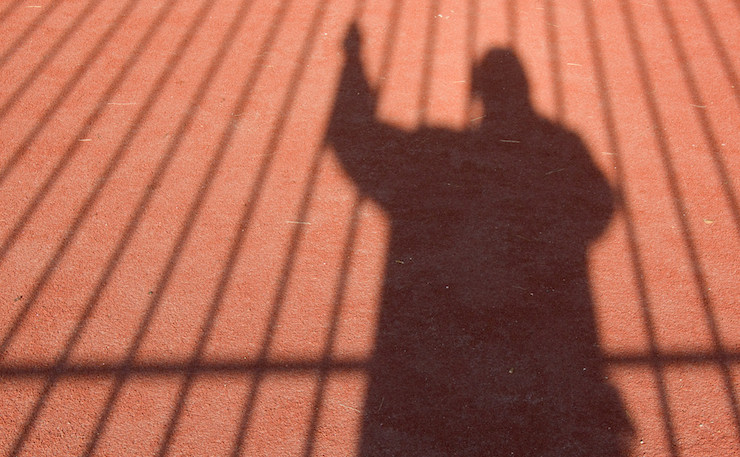In the first of two articles, Michael Brull explains the sweeping powers afforded by the laws, and how they allow Aboriginal people to be locked up for trivial offences.
On 11 November, the High Court of Australia handed down its ruling on the Northern Territory’s scheme of paperless arrests.
Six justices upheld the scheme, with only one dissent.
If I understand the judgment correctly, five of the majority Justices wrote judgments that constructed the relevant legislation so that it limited the powers of the police in their paperless arrests.
Justice Keane upheld the laws more strongly, though he also warned the possibility of a different outcome, “in a case where” the construction of the law “falls to be resolved in circumstances of greater ‘concrete adverseness’ than obtain here.”
Amnesty International responded to the judgment by urging the NT government to scrap the laws, calling them “manifestly unjust and open to abuse”.
The North Australian Aboriginal Justice Agency (NAAJA), which was one of the plaintiffs in the case, expressed disappointment that the court didn’t rule against the laws, but was “pleased that their operation will be significantly narrowed”.
The Human Rights Law Centre’s press release on the case observed that over 2,000 people had been arrested under this scheme in eight months, and roughly 80 per cent of those detained were Aboriginal.
A Freedom of Information request uncovered documents showing that 731 arrests occurred under the scheme from January to March this year, with 525 of those people Aboriginal (72 per cent).
Amnesty observed that the laws “have a shocking and disproportionate impact on Indigenous people”. Aboriginal Senator in the NT, Nova Peris called the laws “disgraceful”. The ALP’s Indigenous Affairs spokesperson said the laws have a “disproportionate impact on Aboriginal people”.
They were also criticised by constitutional scholar George Williams, Human Rights Commission President Gillian Triggs, and the Greens.
Even conservative think-tank the Institute of Public Affairs thought these laws deserved “more scrutiny”.
So far as I know, there hasn’t been sustained critical analysis of the judgment. As will be clear in my accompanying article on the judgment, I think the High Court’s judgment was terrible, and deserves more scrutiny than it has so far received.
The Laws In Question

The legislation under consideration was an addition to the Police Administration Act. It gave the police sweeping powers to arrest people.
The particularly significant section for our purposes is section 123. It provided that “A member of the Police Force may, without warrant, arrest and take into custody any person where he believes on reasonable grounds that the person has committed, is committing or is about to commit an offence.”
That is, if the police think someone is going to commit an offence, they can be arrested and taken into custody. It is not necessary for them to be committing the offence, or for police to reasonably believe they have already done so. If the police say they thought someone was going to commit an offence, they can take them into custody.
What kind of offences are people to be arrested over? Justices Kiefel, Bell, and Chief Justice French observed they were:
“a wide class of offences, most of which are relatively minor. A substantial number of them do not carry any custodial penalty. There are some, however, which provide for a monetary penalty and/or a custodial term to be imposed. A number of the offences prescribed could, according to the circumstances, involve elements of disorderly conduct. However, they also include the offence of failing to keep a clean yard so as to create a nuisance by an offensive smell or otherwise and failing to comply with liquor licence conditions.”
Justice Gageler observed that the “total number of prescribed offences is 35. They range in seriousness from playing a musical instrument so as to annoy… to cultivating a prohibited plant or possessing a dangerous drug.”
Justice Gageler was the only Justice to acknowledge that, “The special case contains agreed facts which demonstrate that the vast majority of those detained under [the legislative scheme]in the first quarter of 2015 were Aboriginal or Torres Strait Islander people.”
That is, the laws give the police the power to lock up Aboriginal people for trivial offenses which they haven’t even committed, but which police claim they reasonably believe were going to be committed.
How long can they be detained for? Section 133AB provides that they can be held for “up to 4 hours”, or, if they are intoxicated, until it is reasonably believed that they are no longer intoxicated. At the “expiry of the period”, they can be released conditionally or unconditionally, given an infringement notice or brought before a justice or court.
The Context
In September 2012, NT Coroner Greg Cavanagh released his inquest into the death in custody of Kwementyaye Briscoe. In the report, he discussed police work in Alice Springs generally. He noted that Alice Springs Watchhouse was very busy, mostly because of “excess consumption of alcohol”.
Prisoner intake for protective custody took up the “vast bulk of the numbers”. From 1 July 2011 to 31 March 2012, there were 8,588 alcohol related incidents in Alice Springs with police intervention.
These are “staggering numbers”, for the Alice Springs Watchhouse. Cavanagh “heard from officers that the main role for police performing general duties is to detain inebriated Aboriginal people in protective custody and to respond to domestic violence, usually fuelled by alcohol.”
And the Assistant Commissioner agreed that “the vast majority of police work involves dealing with persons seriously affected by alcohol through excessive and very extensive liquor consumption. For the most part those seriously affected are Indigenous”.
Cavanagh concluded by urging the NT government to address the issue of alcohol in the NT by reducing the supply of excess alcohol. Within a month, the NT government responded instead by proposing new laws of “mandatory rehabilitation”, designed to, in the words of the Australian, “intentionally push problem street drunks out of public view and into the ‘scrub’”.

Medical anthropologist Richard Clenhall observed that, “The approach is more about getting problem drunks – read: Aboriginal people drinking in public spaces – off the streets… The policy is effectively criminalising drunkenness, which is barking back to a previous era.”
The increased criminalisation of Aboriginal people in public makes it worthwhile to revisit the National Report of the Royal Commission into Aboriginal Deaths in Custody. Some of its passages read as though they were written directly in response to the NT Government’s policies. For example, Royal Commissioner Elliott Johnston wrote:
“There is clear evidence that in some places the laws which police officers have been directed to enforce have been based on unfair and racist assumptions that Aboriginal people, by their very presence in a community, offended non-Aboriginal codes of conduct. One example of this is local campaigns against public drinking. In some instances, the main objective of such campaigns has been the removal of Aboriginal people from the public view. The behaviour which is sought to be addressed is not so much unlawful but simply different to the proprieties observed, at least in public, by many non-Aboriginal people. In my opinion such laws, and the assumptions which underlie them, have no place in Australian society.”
Strange, and sad, that that passage was written over 20 years ago.
Or consider this warning from the National Report:
“Most of the conflict with Aboriginal people arises from police endeavours to enforce ‘street offences’ legislation, which seeks to impose on Aboriginal people the views of the European culture about the appropriate use of public space. While sections of the Aboriginal population have either adopted, or independently share, the values of the dominant community on these issues, the values are not always consonant with, for instance, notions about public drinking, noisiness, language, dress and general decorum. It is the dominant society that creates the law, and it is the role of the police force to enforce this law.
“No doubt police seldom think of their role in keeping the law as maintaining the subordination of Aboriginal people, nor are they the only institution in Australian society that acts to do so. Inevitably their actions re-entrench the stereotypical views of Aboriginal people as offenders. The routine nature of much of police involvement with Aboriginal people means that their day-to-day practices also act to entrench the subordination of Aboriginal people and, with it, racist attitudes in the dominant society. As this report stresses in many places, the time has come for the issues to which cultural differences give rise to be settled by negotiation and with tolerance, rather than by repression and insistence on conformity.
“In many cases, in fact a great majority of cases, Aboriginal people come into custody as a result of relatively trivial and often victimless offences, typically street offences related to alcohol and language. Many of these ‘offences’ would not occur, or would not be noticed, were it not for the adoption of particular policing policies which concentrate police numbers in certain areas, and police effort on the scrutiny of Aboriginal people.
“Trivial as the offences may be in themselves, police reaction to them is fraught with grave consequences. Those arrested are criminalised in several ways. They acquire criminal records, they are defined as deviant not only in the eyes of police but of the broader society, they are introduced to custody in circumstances where they feel resentment rather than guilt, and hence arrest and custody cease to be matters of shame.”
Several of those who objected to the laws, such as Senator Peris and Amnesty, noted that they were likely to result in more Aboriginal deaths in custody. This was explained eloquently in this excellent op-ed by former Victorian ALP Attorney-General Rob Hull.
When the Royal Commission set out to investigate deaths in custody, they had no statistics, and no idea of the scope of the problem. They eventually found that in their period, 99 Aboriginal people had died in custody. They found that “Aboriginal people in custody do not die at a greater rate than non-Aboriginal people in custody”.
What was “overwhelmingly different” was the rate of Indigenous representation in custody. Their high rates of death in custody could be explained “not because Aboriginal people in custody are more likely to die than others in custody but because the Aboriginal population is grossly over-represented in custody. Too many Aboriginal people are in custody too often”. Which is part of why NT policies that disproportionately target Aboriginal people for detention are so objectionable.
We have known for decades that the reason so many Aboriginal people die in custody is because they are so much more likely than non-Aboriginal people to be held in custody in the first place. Yet this problem has steadily gotten worse across Australia.
In 1989 there was an age-standardised Indigenous imprisonment rate of 1465 per 100,000 Aboriginal persons.
By 2011, this was a rate of 1868 per 100 000.
This ratio has increased every year, apart from one, since 2000. According to Hull, Aboriginal people make up 85 per cent of the NT’s prison population, though they only represent 30 per cent of its general population.
Policies like paperless arrests are more or less designed to increase the disproportionate rate at which Aboriginal people are taken into custody.
As noted in the judgment by Justice Gageler, Attorney-General John Elferink frankly explained the purpose of the laws: “This means the police will no longer become arrest averse. It will actually say to the police that if these clowns are playing up, arrest them, take them into custody, get them out of circulation.”
The idea that the police in the NT are “arrest averse” is flatly contradicted by the facts. Listeners know perfectly well what sort of “clowns” such policies will target.
The fact that the High Court upheld such laws is thus of particular significance. These are laws that will result in real pain, real suffering, real institutionalised racism, and real deaths in custody.
In Part 2, Michael Brull will examine how the Court reached its conclusions.
Donate To New Matilda
New Matilda is a small, independent media outlet. We survive through reader contributions, and never losing a lawsuit. If you got something from this article, giving something back helps us to continue speaking truth to power. Every little bit counts.





